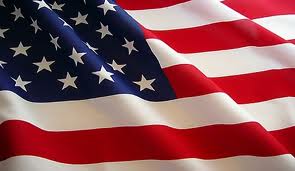The countdown to the new Unitary Patent system has begun. The Unified Patent Court is expected to open its doors at the start of 2017, preceded by a provisional phase in 2016 for the practical set up of the Court and the recruitment of judges and staff. Not only European patent specialists are preparing, companies in the US as well. Kluwer IP Law spoke to Audrey Nemeth, European Patent Attorney, US Patent Agent and author of the book US Patent Law for European Patent Professionals, about the upcoming changes and what effect they will have in the US.
 Do you think companies in the US will massively apply for Unitary Patents to get the broad protection of this new patent?
Do you think companies in the US will massively apply for Unitary Patents to get the broad protection of this new patent?
‘The number of European applications from the US will probably not rise considerably when the Unitary Patent comes into force, as the European application procedure is already favored by US applicants. Upon grant by the EPO, however, it is anticipated that US applicants will overwhelmingly opt for protection under the Unitary Patent rather than under a bundle of national patents.
The Unitary Patent has several clear advantages. It will automatically be valid in all European countries which are party to the UPC Agreement, whereas under the present system, at the time of grant, the validation for each European country must be pursued separately, with each country having its own regulations for validation and fees. Consequently, the Unitary Patent will grant protection in about 20 European states for the same price that a patentee would normally pay to have his patent validated in just three to four European states, and require considerably less administrative work in monitoring fees and deadlines over the lifetime of the patent.’
And how about the Unified Patent Court? Will this be used by US companies?
‘Under the current system, different national courts in different European countries often produce contradictory rulings, with the consequence that an alleged infringer is deemed to have infringed or not infringed a particular patent by different national courts, or a granted patent’s scope may be restricted differently (or even nullified) in different countries. Also, the cost of litigating a single patent in multiple European countries quickly becomes very expensive, although it is still usually less, in sum, than the cost of litigation of a single patent in the US.
The UPC will offer complete, unitary protection, with rulings on infringement, restriction or nullity being valid for all European countries which are party to the system.’
Will litigation shift from US courts to the Unified Patent Court?
‘Under the present system, IP litigation in certain European jurisdictions, including Germany, is already very popular with US companies, as the cost of litigating IP in most European countries is much lower than the US. Depending on the country, a decision in Europe can be ten to hundred times less expensive than in the US. Moreover, the quality of the courts in Europe is very high. This will probably remain the case under the new system, with litigation before the UPC probably being significantly less expensive than litigation in the US.

Depending on the reputation which the UPC develops, i.e. whether the UPC reliably delivers high-quality work within a compact timeframe, the decisions of the UPC may gain ‘traction’ in the US, meaning that the US courts may place trust in decisions of the UPC, so that in parallel litigation, the US court’s decision might be swayed to match the findings of the UPC. This will depend on whether the UPC develops a reputation for outstanding legal and technical competence as well as fairness and impartiality, of course.
However, there will always be differences between US and European patent law (for example, the criteria for patentability – in Europe, technicity is a precondition, whereas in the US, technicity is not required). Therefore, due to different legal frameworks and due to the fact that a US patent does not always grant with the same scope of protection as its corresponding European patent, there will always be a need to try certain patents and infringement cases before the US courts as well as before the UPC.’
Are US companies aware of and preparing for the new UP system?
‘With regard to preparing for the new system, this will become more of an issue as ratification for the new system nears a close. At the moment, eight out of the necessary 13 countries have ratified.
Having said this, US companies are certainly aware of the developments to the UP system, as many are highly anticipating the savings in cost and administrative work, as well as the complete, unitary protection conferred by the UP. Being able to treat ‘Europe’ as a single jurisdiction, rather than over 20 separate jurisdictions, will simplify US patent departments’ work enormously, and result in tremendous cost savings as well.’
Does this also mean there will be less jobs for US (and European) patent specialists/patent attorneys? What does it mean for the patent profession?
‘The creation of a Unitary Patent does mean that a certain portion of the work which US and European attorneys manage will fall away – namely activities regarding validation and maintenance of patents in separate European states. Furthermore, under the new system less patent litigation will be conducted before national patent courts of European states.
However, the number of European and worldwide applications has steadily risen in recent years, so there is still plenty of prosecution work. Also, the current reforms do not impact other types of IP protection, such as utility models, designs and trademarks.
It is expected that a certain number of professionals from European national courts will be recruited by the UPC. Furthermore, for companies serving local markets, start-ups and inventors, the relatively low cost of a national patent will result in continued demand for the services of national patent offices.’
For regular updates on the UPC, subscribe to the free Kluwer IP Law Newsletter.
________________________
To make sure you do not miss out on regular updates from the Kluwer Patent Blog, please subscribe here.


